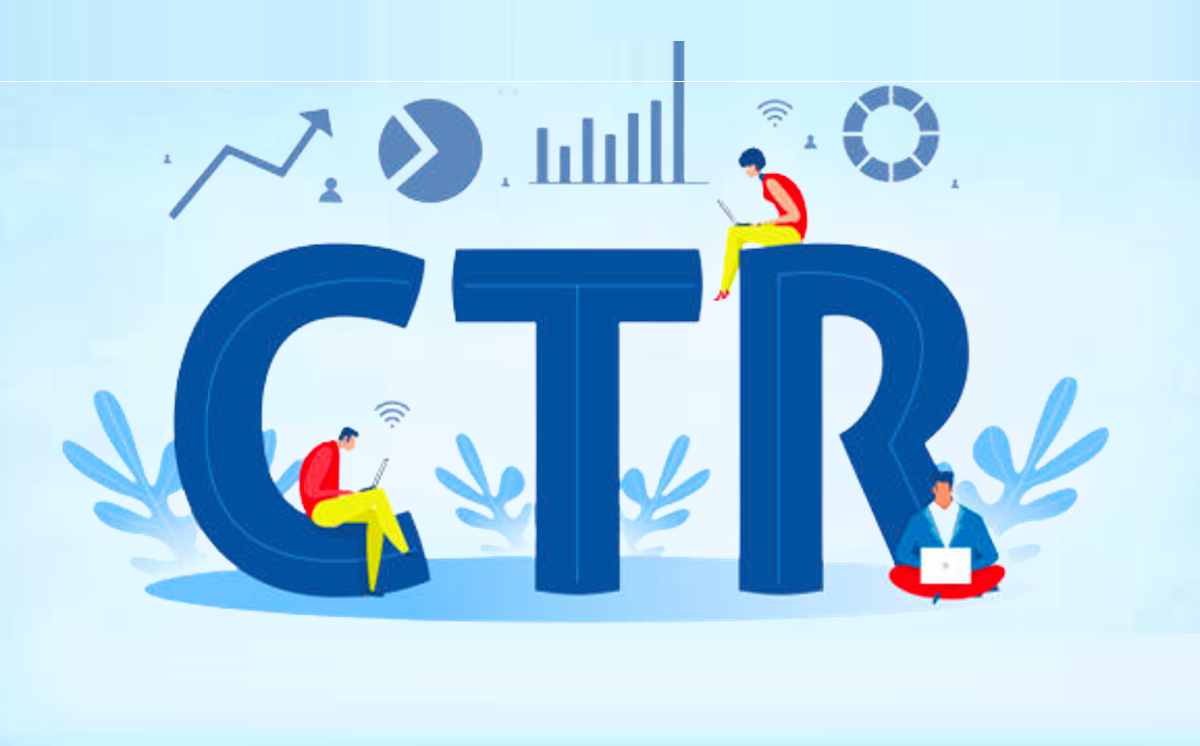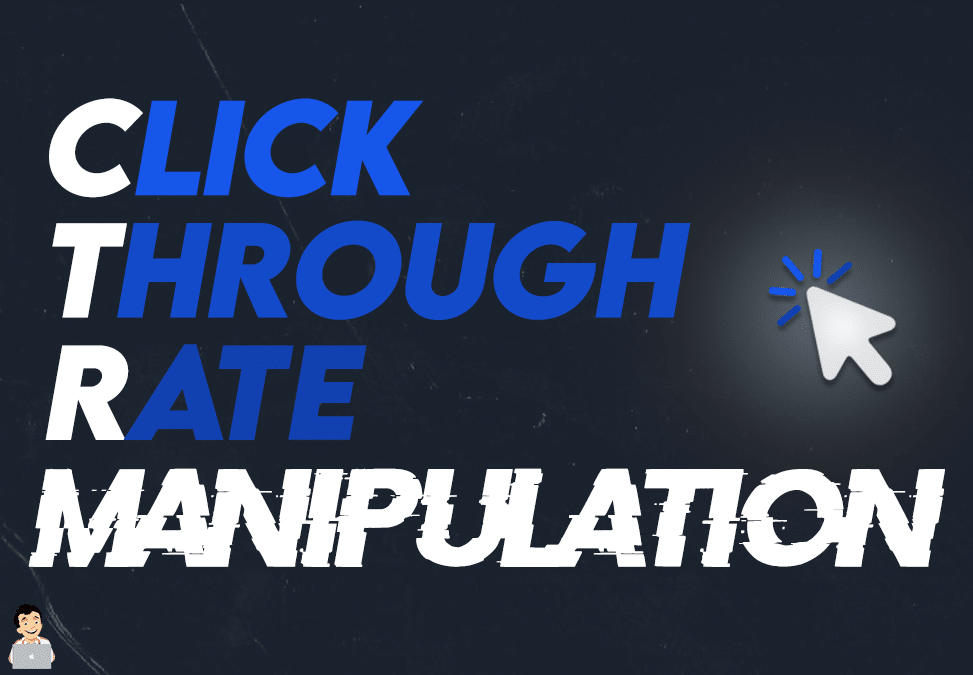Supercharge Your Link Structure Efforts with LinkDaddy CTR Manipulation Knowledge
Wiki Article
CTR Control: The Secret to Controling Search Results Page
In the affordable landscape of digital advertising and marketing, Click-Through Rate (CTR) control has become an essential approach for boosting presence in search outcomes. While the appeal of improved interaction via enticing headings is obvious, the ethical ramifications and potential effects warrant careful consideration. A deeper expedition into the emotional variables influencing CTR, together with effective and lasting strategies, reveals a complicated interaction in between prompt gains and long-lasting count on. What approaches can be utilized to make certain that manipulation does not compromise integrity? The answers may redefine how we approach electronic engagement.Comprehending Click-Through Price
Understanding click-through price (CTR) is vital for assessing the effectiveness of digital advertising and marketing campaigns. CTR is specified as the proportion of users who click on a specific web link to the overall number of users who watch a web page, email, or advertisement . This metric works as an important indication of interaction and the significance of web content to the target market.A higher CTR normally indicates that the advertising technique is effectively recording interest and motivating activity. Conversely, a low CTR might show that the web content is not resonating with individuals, prompting a need for assessment and possible adjustment. Variables affecting CTR consist of the quality of ad duplicate, visual charm, and the relevance of search phrases.
In addition, CTR can vary dramatically throughout various platforms and styles, highlighting the significance of context in translating the information. For circumstances, social media ads may produce various CTRs compared to browse engine outcomes - GMB CTR Manipulation. By constantly keeping an eye on and examining CTR, marketing professionals can identify patterns, optimize projects, and boost overall performance. Therefore, a detailed understanding of CTR is essential for driving conversions and achieving company objectives in the affordable electronic landscape.
The Psychology Behind CTR
Leveraging mental principles can substantially enhance the efficiency of click-through rate (CTR) methods. Understanding the cognitive biases and psychological triggers that influence user behavior is critical in crafting web content that reverberates with target markets. For example, the concept of scarcity produces seriousness; individuals are much more inclined to click web links that recommend restricted accessibility or time-sensitive deals.Furthermore, social evidence plays an important duty in decision-making. When customers observe others involving with content-- such as with high ratings or endorsements-- they are more probable to do the same, strengthening the value of showing positive comments prominently.
Additionally, appealing to curiosity can drive clicks; interesting headings that stimulate concerns or highlight unusual truths compel users to seek responses.
Moreover, familiarity types depend on. Constant branding and style across platforms impart self-confidence, making customers a lot more inclined to click acquainted sources.
Methods for CTR Enhancement
Efficient strategies for boosting click-through rates (CTR) are crucial for taking full advantage of on-line interaction and driving website traffic. Additionally, using convincing language in meta summaries to highlight one-of-a-kind marketing factors can additionally raise CTR.
One more strategy involves utilizing abundant bits, such as star ratings, pictures, or various other aesthetic components in search engine result. These enhancements not only record customer focus yet likewise offer useful details at a glimpse, making the listing a lot more appealing.
Integrating a sense of urgency or exclusivity in calls to action can additionally increase CTR. Phrases redirected here like "minimal time deal" or "join now" can prompt instant action from potential visitors.
Furthermore, leveraging A/B testing permits online marketers to continually refine and optimize their strategies. By analyzing different headlines, summaries, and aesthetic components, companies can recognize what reverberates ideal with their target market.

Gauging CTR Efficiency
Measuring the effectiveness of click-through rate (CTR) strategies is crucial for evaluating the success of online campaigns. Start by tracking the total CTR, which is calculated by dividing the number of clicks by the number of perceptions.
In addition, think about the context of the CTR. If it does not lead to conversions, a high CTR does not always relate to success. CTR Manipulation Press Release. Therefore, integrating CTR information with conversion rates provides an extra alternative sight of performance. Eventually, continual tracking and modification based upon CTR efficiency is essential for taking full advantage of the effect of digital advertising and marketing techniques and attaining long-term success.
Honest Factors To Consider in CTR Adjustment
Navigating the world of click-through rate (CTR) manipulation raises substantial honest factors to consider that marketing experts must deal with. While enhancing CTR can enhance exposure and involvement, it additionally presents the Click Here danger of deceptive consumers. Moral advertising and marketing techniques demand transparency and honesty; as a result, adjusting CTR via deceitful methods, such as clickbait headings or misrepresentative web content, can deteriorate trust and damage brand name reputation.Furthermore, the usage of artificial methods to pump up CTR-- such as utilizing bots or incentivizing clicks-- can breach platform plans and bring about fines, further emphasizing the significance of moral conformity. Marketing professionals should take into consideration the lasting ramifications of their techniques on customer connections and the total integrity of the digital market.
Additionally, the moral landscape encompasses the more comprehensive implications of data privacy. Gathering individual information for CTR optimization without notified approval increases severe ethical worries. It is crucial for marketing professionals to involve in accountable information techniques, making sure that customer personal privacy is respected.
Ultimately, honest factors to consider in CTR control require a balance between business goals and the dedication to openness, check this honesty, and regard for consumer legal rights. By prioritizing ethical methods, marketing professionals can promote sustainable growth while maintaining count on and reputation in the electronic room.
Conclusion
In final thought, while CTR manipulation might provide instant exposure and interaction benefits, it poses considerable threats to long-term trust fund and conformity with internet search engine guidelines. Sustainable digital advertising and marketing approaches must prioritize moral techniques and real individual involvement, making sure positioning with consumer rate of interests. A balanced strategy that emphasizes openness over deceptive techniques will ultimately promote long lasting success in search results page supremacy, protecting brand names against prospective penalties and reputational damages.In the competitive landscape of digital advertising, Click-Through Rate (CTR) adjustment has actually emerged as a pivotal technique for improving exposure in search results. CTR is specified as the ratio of individuals who click on a certain web link to the total number of users who see a e-mail, promotion, or web page . Alternatively, a reduced CTR may suggest that the material is not resonating with individuals, motivating a requirement for evaluation and potential modification.Navigating the world of click-through price (CTR) adjustment raises significant moral considerations that online marketers need to attend to. Collecting user data for CTR optimization without informed approval raises serious ethical worries.
Report this wiki page